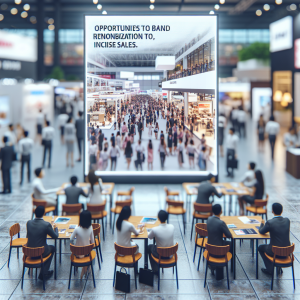How Waiting Time Affects Customer Satisfaction
Waiting time has become one of the most crucial factors determining customer satisfaction. In a world where everything happens quickly, customers often lack patience for long waiting periods. This article will analyze the relationship between waiting time and customer satisfaction, from psychological factors to consequences and solutions to improve service quality.
The Importance of Customer Satisfaction in Modern Business
Customer satisfaction is not only an important metric but also a vital factor for maintaining and growing a business. Satisfied customers tend to return and refer others, while dissatisfaction can lead to customer loss and affect brand reputation.
Waiting Time: The Silent ‘Enemy’ of Customer Experience
Waiting time often causes discomfort and frustration for customers. Negative experiences due to prolonged waiting can make customers feel neglected and unvalued. This directly affects their satisfaction levels.
Research Evidence: The Relationship Between Waiting Time and Satisfaction Levels
Studies have shown a strong link between waiting time and customer satisfaction. According to a recent survey, 70% of customers stated that longer than expected waiting times made them feel dissatisfied. These figures demonstrate that managing waiting time is very important.
The Psychology of Waiting Time: Why Does Waiting Seem Longer Than It Actually Is?
The customer’s perception of waiting time is influenced by many psychological factors, such as feelings of uncertainty and lack of information. When customers are unsure of when they will be served, waiting times seem longer than they really are.
Customer Expectations: How Long is Acceptable Waiting Time?
Customers have different expectations regarding waiting times depending on the type of service and the culture of each country. For example, customers in developed countries often have higher expectations for quick service compared to those in developing countries.
Cultural Differences: How Does Perception of Waiting Time Change Across Countries?
Perception of waiting time can vary between countries. For instance, in some cultures, waiting is viewed as a natural part of the experience, while in others, speed and efficiency are prioritized.
Losing Customers to Competitors: When Waiting Time ‘Kills’ Loyalty
Prolonged waiting can lead to customer loss to competitors. A study found that 80% of customers do not return if they had to wait too long during their previous service.
Negative ‘Word of Mouth’: The Impact of Waiting Time on Brand Reputation
Negative experiences surrounding waiting time can spread rapidly on social media. Negative reviews can significantly impact brand reputation and lead to a loss of new customers.
Opportunity Costs: How Much Does Waiting Time ‘Cost’ Businesses?
Waiting time not only reduces satisfaction but also leads to opportunity costs that businesses must bear. These costs can include reduced productivity, increased operational costs, and decreased customer loyalty.
Optimizing Service Processes: The ‘Key’ to Effectively Reducing Waiting Times
Solutions to improve the service process will help reduce waiting time and thus, enhance customer satisfaction. Businesses can implement automation, staff training, or smart customer flow management to optimize the entire process.
Applying Technology: Turning Waiting Time into Opportunities for Enhancing Customer Experience
Technology, such as electronic queuing systems or customer support chatbots, helps reduce waiting times and improve customer experience. Utilizing technology not only optimizes time but also provides customers with useful information while they wait.
Effective Communication: Helping Customers ‘Happily’ Wait
Communication is key in managing waiting time. Providing transparent and timely information to customers about waiting times can help ease their anxiety and create a more positive experience.
Creating Added Value: Turning Waiting Time into Marketing Opportunities
Businesses can leverage waiting time to promote other products or services through providing entertaining content for customers. This not only helps customers feel more comfortable while waiting but also increases their likelihood of purchases.
Measuring Customer Satisfaction: The ‘Compass’ to Guide Improvement
To assess the outcomes of solutions that reduce waiting time, businesses need effective measurement methods. Surveys, interviews, and online feedback collection will help businesses determine the level of customer satisfaction.
Data Analysis: Finding the ‘Bottleneck’ in the Service Process
Data analysis can help businesses identify bottlenecks in the service process. This will create opportunities for businesses to improve service effectiveness and optimize customer experience.
Investing in Customer Experience: The Key to Sustainable Success
Ultimately, investing in customer experience, including managing waiting time, not only enhances satisfaction but is also key to ensuring sustainable growth for the company in the future. Businesses should continuously improve, innovate, and create to offer the best possible customer experience.
Call to action: Encourage readers to apply the proposed solutions to improve customer experience and enhance competitive advantage.
Contact us today for tailored consultation!
Intage Vietnam: Your trusted partner for comprehensive and effective market research solutions.
📞 (+8428) 3820 5558
🌐 https://intage.com.vn/
🏢 45 Vo Thi Sau, Da Kao Ward, District 1, Ho Chi Minh City, Vietnam





